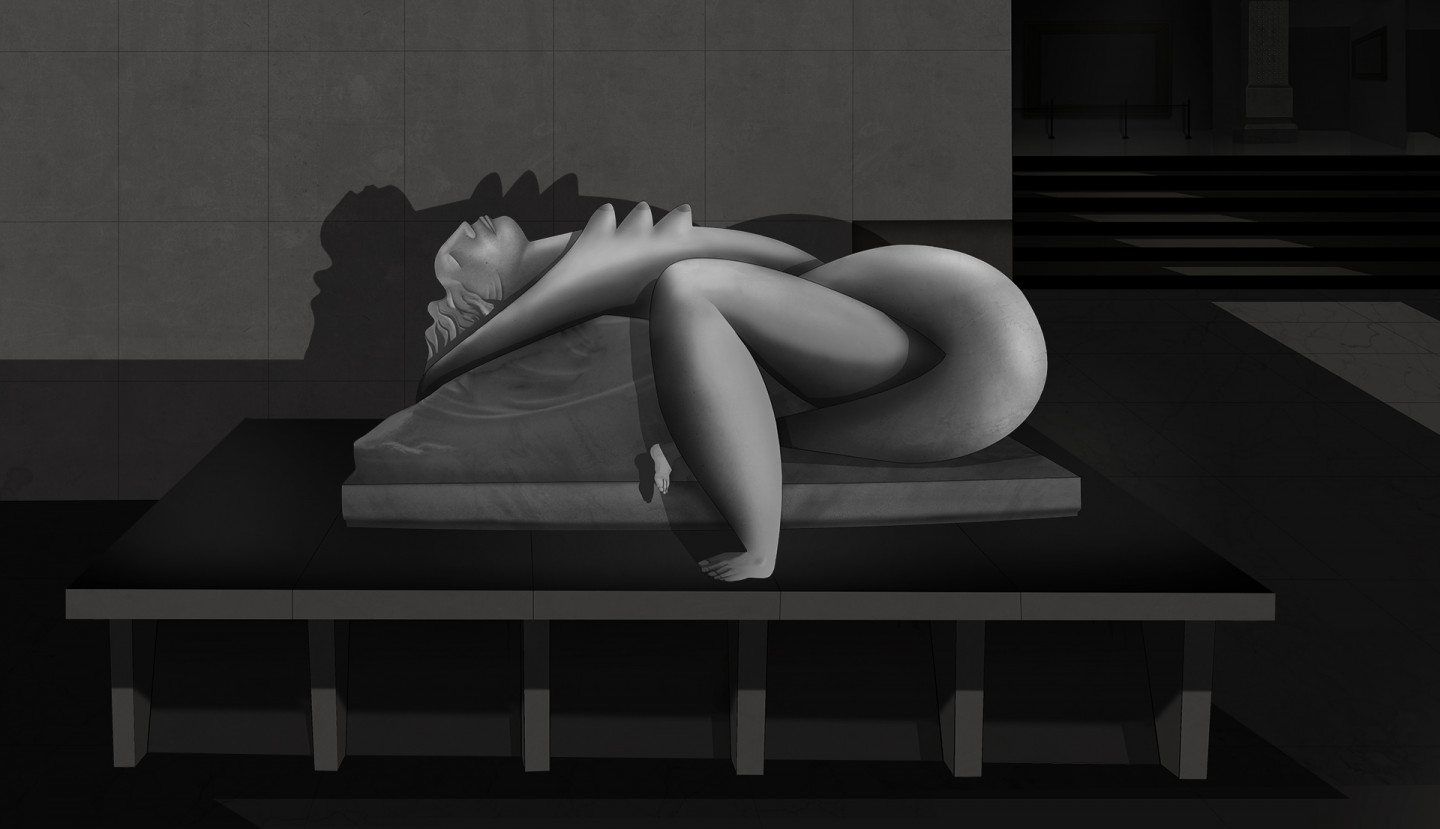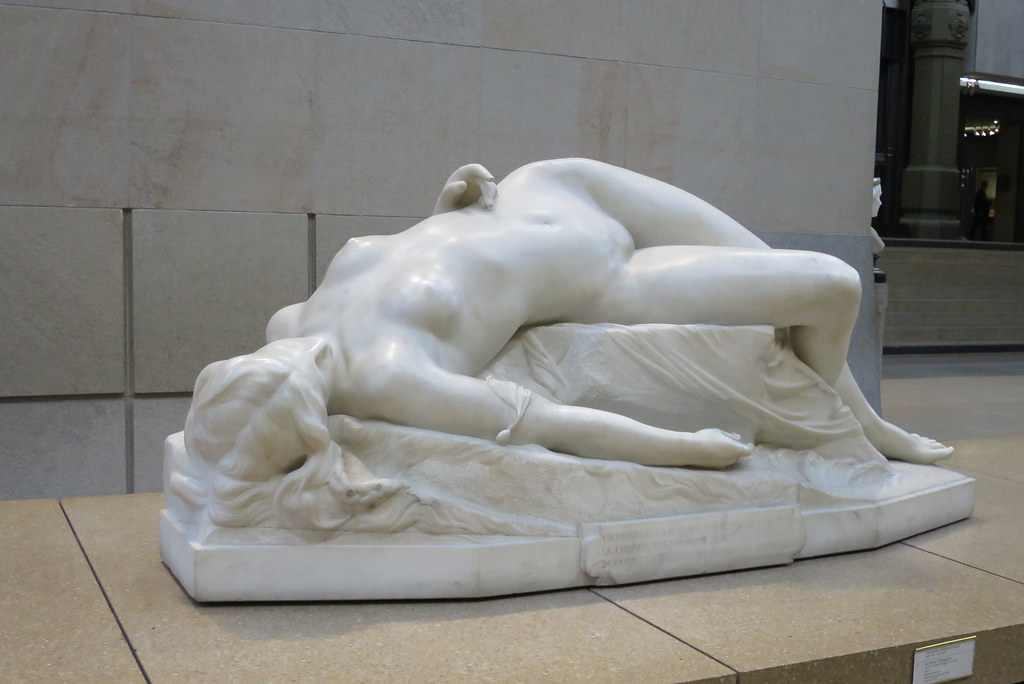Schoenewerk, Alexandre (1820-1885): A tarentumi szűz, 1871 (márvány, 74 x 171 cm, Musée d'Orsay, Párizs). A késő romantika és realizmus szellemében dolgozó francia szobrász legismertebb szobra, mely André Cheniérs francia költő azonos című, 1790 körül írt versének inspirációjára készült. A valósághoz hasonlóan, a filmben is a Musée d'Orsay-ben láthatjuk, csak a valóságosnál kissé jobban összetekeredett végtagokkal.
A fiatalon a francia forradalom kivégzési hullámának áldozatul eső, a „nép ellenségének” kikiáltott André Chéniers a „leggörögebb” francia költő volt, aki „új Homérosz” kívánt lenni. Antik versformában, görög mitológiai utalásokkal megtűzdelve íródott A tarentumi szűz c. verse is, melyben a vőlegényéhez hajózó gyönyörű szűz tengeri viharban leli halálát, holttestét pedig Thetisz istennő, legfőbb tengeri nimfa kérésére Nereidák, azaz nimfák szállítják partra. Schoenewerk a témához méltóan, az antik görög kultúra késői, hellenisztikus szakaszára emlékeztető stílusában alkotta meg szobrát: különleges, kicsavart pózban, csípőjét kiemelve fekszik előttünk a gyönyörű női test, mintegy bizarr ravatalon. Egyszerre erotikus és tragikus: a természetellenesen megtört test a pusztító hullámoknak való kiszolgáltatottságot, „partra vetettséget”, a nyugodt, csukott szemű arc azonban inkább csak édes álmot sejtet. A szobor talapzatára Chéniers versének három sora van felvésve. A művészetet és még inkább a művészeti sikert mindennél előbbre tartó Schoenewerk tragikusan vetett véget életének: egy harmadik emeleti ablakon kiugorva lett öngyilkos, mert az 1885-ös párizsi Szalonon nem aratott tetszést Salome című szobra.
Schoenewerk, Alexandre (1820–1885): The Virgin of Tarentum, 1871
(marble, 74 x 171 cm, Musée d'Orsay, Paris). This is the most famous sculpture by the French artist working in the spirit of late Romanticism and Realism. It was inspired by the poem of the same name by André Chénier, written around 1790. As in reality, the piece appears in the Musée d'Orsay in Ruben Brandt, Collector—though with slightly more twisted limbs than in the original.
Chénier, a poet executed during the Reign of Terror and labeled an “enemy of the people,” was considered “the most Greek” of French poets, aspiring to be a new Homer. The Virgin of Tarentum is written in classical verse form and filled with Greek mythological references. It tells the story of a beautiful maiden sailing to her fiancé who dies in a storm at sea; her body is brought ashore by sea nymphs, the Nereids, at the request of Thetis, the chief sea goddess.
Schoenewerk sculpted the scene in a style reminiscent of late Hellenistic Greek art. The beautiful female body lies before us in an elaborate, contorted pose with raised hips, like on a bizarre, otherworldly bier. The result is both erotic and tragic: the unnaturally twisted figure conveys vulnerability and surrender to the sea’s destructive power, while her serene, closed-eyed face suggests only a peaceful sleep. Three lines from Chénier’s poem are inscribed on the statue’s base.
Schoenewerk, who valued art—and especially artistic recognition—above all else, tragically ended his life by jumping from a third-story window after his sculpture Salome failed to impress at the 1885 Paris Salon.







































